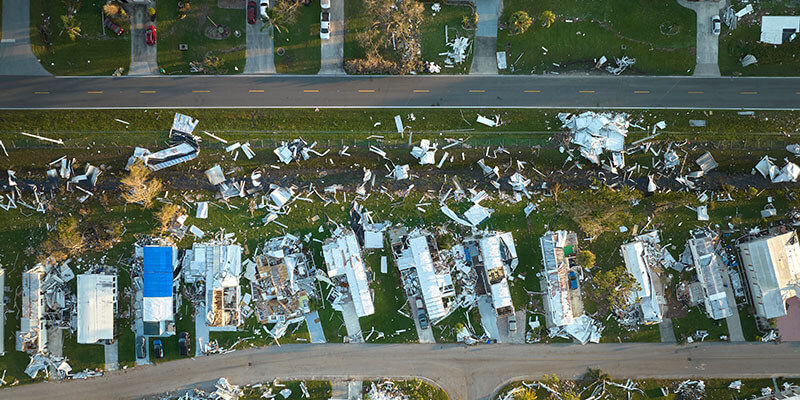By: Michael Goldman and Natasha Paz
Classic cars are unique properties for which coverage under a standard auto policy might be insufficient. For insurance companies, pricing these products isn’t as straightforward as traditional auto policies. Whereas traditional auto policies are built around a vehicle’s depreciation over time, collectible car policies consider that the asset’s value potentially appreciates with age.
While classic car ownership was once a specialized market, today’s owner demographics are shifting. Many car collectors are still of the boomer generation, but more and more younger drivers are investing in collector cars as hobbies or as stylish rides around town. This shift is fueled by younger drivers with more disposable income, a heightened interest in classic car restoration, and a rising appreciation for vintage vehicles.
The definition of a “classic car” is changing, too. “Classic” no longer refers solely to chrome-heavy sedans from the 50s and 60s. Now, certain cars from the 1970s – and even the 80s and 90s – are categorized as “modern” classics. As the U.S. vehicle fleet ages and more consumers shift to hybrid or electric, a niche market for classic combustion engine vehicles is emerging, and supplies will continue to shrink over time.
Per Credence Research, the vintage car market is expanding rapidly, expected to double in size1 over the next decade. Though classic cars still often obtain coverage from standard auto insurance carriers, specialty insurance policies offer benefits to both policyholders and insurance companies. This all adds up to an opportunity for insurance companies to develop products that are appropriately priced to take advantage of this growing market sector.
Here are some insurance product development insights from the actuarial consulting experts at Perr&Knight to keep in mind when writing new classic car programs or re-evaluating your existing programs.
Value of the Vehicle
Unlike standard automobiles, where the value of the vehicle is expected to decrease with usage, the value of collector cars usually rises over time. Establishing the value of a classic car isn’t as straightforward as with a modern vehicle. One of the main challenges is that there is no standard, agreed-upon industry definition of a “classic” or “collectible” car.
Autos that often fall into this category do share some features, such as:
- Most (but not all) are at least 25 years old
- Exotic cars (e.g. Lotus, Maclaren, Maserati)
- Cars with historical value (e.g. Model-T, hot rod)
From there, insurance companies work with policyholders to establish a predetermined “agreed value” of the vehicle. This value can be established based on appraisal data, interviews with the insured, and research on the value of similar vehicles. The agreed value becomes the amount paid in the case of total loss or theft and is used to determine if the vehicle will be repaired or considered a total loss. The “agreed value” also protects the policyholder against vehicle depreciation in the event of a claim.
Discounted Rates
Though drivers of classic cars tend to have many years (potentially decades) of safe driving behavior under their belts, the shift towards a younger demographic means that many collector car drivers have shorter driving histories. That said, collectors of any age tend to be extra careful with these vehicles – both on the road and in storage.
Classic vehicles are usually not driven as often or with the same risk tolerance as a modern daily ride, so these behaviors can play a factor in insurance product development when establishing rates.
Because of this careful driving and increased attention to maintenance, collector vehicles are generally involved in fewer accidents than their modern counterparts. This factor can result in pricing differences when compared with traditional policies and potentially lower rates for classic vehicle owners.
Pricing Classic Car Policies
One of the most useful ways to gain intelligence on pricing is to review competitor filings and look at the kinds of variables used in successful programs. Not all states make filing information public, but for those that do, reviewing market share, checking financial statements for profitability, and looking at the pricing variables in their programs are all solid indicators of how a competing program might function in the same jurisdiction. For states without public records, information from available sources creates a solid foundation, which can then be adjusted based on other known variables for the region.
Actuarial consulting experts like the team at Perr&Knight have extensive experience evaluating multiple factors – some obvious, some less common – to develop profitable pricing strategies for classic car programs.
State-Specific Nuances
As with all insurance product development, regulation varies by state. Our actuarial consulting and product development departments have decades of experience navigating the ins and outs required by individual states. Therefore, consulting with experts throughout product development and filing can save time and increase speed to market by spotting and correcting issues that might be questioned by regulators.
Today, many opportunities exist to augment business with new classic car policies or update existing coverage. The challenges related to pricing these policies also offer opportunities to create unique products. Differences in the definition of “classic” – along with all the expected complexity of developing any insurance policy – mean that classic car product development could benefit from a seasoned actuarial consulting team. Keeping the above in mind will help you steer clear of obstacles when developing or updating your classic/collectible auto program.
Contact Perr&Knight today to chat with our actuarial consulting team or for insurance product development support.
- https://www.credenceresearch.com/report/north-america-classic-cars-market ↩︎












